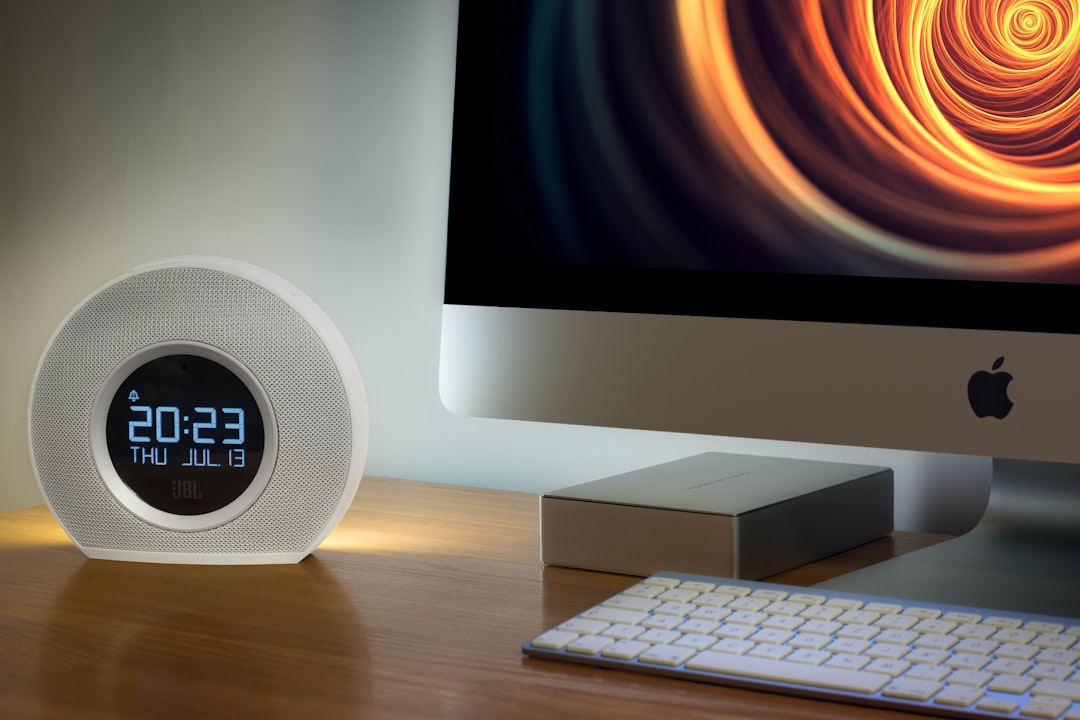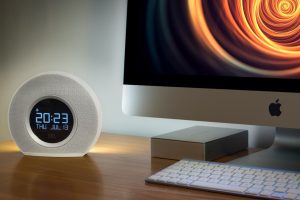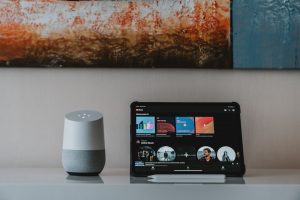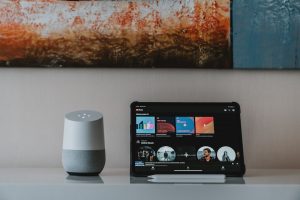Smart Home Devices for Busy Parents: Safety & Ease
Discover top smart home devices that enhance safety and convenience for busy parents. Simplify your life and protect your family today.
Introduction to Smart Home Devices
What Are Smart Home Devices?
Smart home devices are electronic gadgets that connect to your home network, allowing you to control them remotely via a smartphone app, voice assistant, or automation system. These devices are designed to enhance the convenience, security, and efficiency of your living space.
By integrating with the Internet of Things (IoT), smart home devices can communicate with each other, creating a cohesive and responsive environment tailored to your preferences.
Types of Smart Home Devices
There are numerous types of smart home devices available, each serving a specific purpose. Popular categories include smart speakers, which act as central hubs for voice-controlled automation; smart lighting, which allows for customizable and energy-efficient lighting solutions; and smart thermostats, which optimize heating and cooling schedules to reduce energy consumption.
Other notable devices include smart security cameras, smart locks, and smart appliances, all contributing to a safer and more convenient home environment.
Benefits of Smart Home Devices
Smart home devices offer a range of benefits that enhance everyday life. One of the primary advantages is increased convenience, as these devices can be controlled from anywhere, at any time, using a smartphone or voice command.
This allows for seamless management of home functions, such as adjusting lighting or temperature, even when you’re not at home.
Another significant benefit is improved energy efficiency. Smart thermostats, for example, learn your schedule and preferences to optimize heating and cooling, potentially reducing energy bills.
Similarly, smart lighting systems can be programmed to turn off automatically when not in use, further conserving energy.
Security is also a major advantage of smart home devices. With smart security cameras and locks, homeowners can monitor their property in real-time and receive alerts of any suspicious activity, providing peace of mind whether at home or away.
Considerations When Choosing Smart Home Devices
When selecting smart home devices, it’s essential to consider compatibility with existing systems and devices.
Ensuring that new devices can integrate seamlessly with your current setup will provide a smoother user experience. Additionally, consider the ease of use and the level of technical support available from the manufacturer.
Security and privacy are also important factors.
Opt for devices that offer robust security features and regularly update their software to protect against vulnerabilities. Lastly, consider the cost and evaluate whether the long-term benefits outweigh the initial investment.
Top Smart Home Devices of 2021
Smart Speakers
In 2021, smart speakers continued to dominate the smart home market, with Amazon Echo and Google Nest leading the charge.
These devices not only serve as personal assistants, answering questions and setting reminders, but they also control other smart home devices through voice commands. The Amazon Echo’s integration with Alexa and the Google Nest’s use of Google Assistant make them versatile and user-friendly options for any home.
Smart Thermostats
Smart thermostats, such as the Nest Learning Thermostat and the Ecobee SmartThermostat, have revolutionized home climate control.
These devices learn your schedule and preferences over time, optimizing heating and cooling to save energy and reduce utility bills. With app connectivity, users can adjust their home’s temperature remotely, ensuring comfort and efficiency at all times.
Smart Security Systems
Home security has been enhanced with smart security systems like the Ring Video Doorbell and Arlo Pro 4.
These devices offer features such as motion detection, video recording, and real-time alerts, allowing homeowners to monitor their property from anywhere. The integration with smart home ecosystems ensures seamless operation and enhanced security coverage.
Smart Lighting
Smart lighting solutions, including Philips Hue and LIFX, offer customizable lighting options that can be controlled via smartphone apps or voice commands.
These systems allow users to adjust brightness, color, and scheduling to create the perfect ambiance for any occasion. Energy efficiency and the ability to integrate with other smart home devices make smart lighting a popular choice in 2021.
Smart Plugs
Smart plugs, such as those from TP-Link and Wemo, provide an easy entry point into home automation.
These devices allow users to control traditional appliances and electronics through their smartphones or voice assistants. By scheduling on/off times and monitoring energy usage, smart plugs help improve convenience and energy efficiency.
Pros and Cons of Smart Devices
Pros of Smart Devices
Smart devices have revolutionized the way we interact with our homes, offering unparalleled convenience and efficiency.
One of the primary advantages is the ability to control various aspects of your home remotely. Whether it’s adjusting the thermostat, turning off lights, or locking doors, smart devices make it possible to manage your home environment from anywhere using a smartphone or tablet.
Another significant benefit is energy efficiency.
Smart thermostats, for example, learn your schedule and adjust heating and cooling settings automatically, which can lead to substantial energy savings. Similarly, smart lighting systems can be programmed to turn off when not in use, reducing electricity consumption.
Security is also enhanced with smart devices.
Smart cameras, doorbells, and locks provide real-time monitoring and alerts, allowing homeowners to keep an eye on their property from afar. This added layer of security can deter potential intruders and provide peace of mind.
Cons of Smart Devices
Despite their many benefits, smart devices come with certain drawbacks.
One of the most significant concerns is privacy. Since these devices often collect and store data about your habits and routines, there is a risk of this information being accessed by unauthorized parties.
Ensuring robust security measures and regularly updating device software is crucial to mitigate these risks.
Another downside is the potential for technical issues. Smart devices rely on a stable internet connection, and any disruptions can affect their functionality.
Additionally, compatibility issues between different brands and systems can lead to a fragmented smart home experience, requiring users to manage multiple apps and interfaces.
Cost is also a consideration. While prices for smart devices have become more affordable, the initial investment can still be significant, especially when outfitting an entire home.
Additionally, some devices may require ongoing subscription fees for full functionality, adding to the overall expense.
Conclusion and Recommendations
Summary of Key Findings
In the rapidly evolving landscape of smart home technology, selecting the best devices requires a balance between functionality, compatibility, and user experience. Our exploration into the best smart home devices has highlighted several key categories, including smart speakers, lighting, security systems, and thermostats.
Each category offers unique benefits that can enhance convenience, security, and energy efficiency in the home.
Smart speakers, such as those powered by Amazon Alexa and Google Assistant, have become central hubs for controlling various devices, while smart lighting systems provide customizable ambiance and energy savings. Security systems, including smart cameras and doorbells, offer peace of mind with real-time monitoring and alerts.
Smart thermostats contribute to energy efficiency by learning user preferences and optimizing heating and cooling schedules.
Recommendations for Consumers
When choosing smart home devices, consumers should prioritize compatibility with existing systems and future-proofing their investments. Devices that integrate seamlessly with popular platforms like Amazon Alexa, Google Assistant, or Apple HomeKit offer the most flexibility and ease of use.
Additionally, considering the scalability of the system is crucial for those planning to expand their smart home setup over time.
Security should be a top consideration when selecting smart home devices. Opt for products from reputable manufacturers that offer robust data encryption and regular software updates to protect against potential vulnerabilities.
Reading user reviews and expert opinions can also provide valuable insights into the reliability and performance of different devices.
Future Trends and Considerations
As technology continues to advance, the future of smart home devices promises even greater integration and automation. Emerging trends such as artificial intelligence and machine learning are expected to enhance device capabilities, offering more personalized and intuitive interactions.
Consumers should stay informed about these developments to make informed decisions about upgrading their smart home systems.
Environmental sustainability is another growing consideration. Opting for energy-efficient devices and those with eco-friendly certifications can contribute to reducing the overall carbon footprint of a household.
As the market for smart home devices expands, consumers should remain vigilant about the environmental impact of their choices.
FAQ
Q1: Who should consider buying smart home devices?
A1: Smart home devices are ideal for a wide range of users, including tech-savvy individuals, busy professionals, students, and frequent travelers. For tech enthusiasts, these devices offer the latest in convenience and automation, allowing for seamless control of home environments. Busy professionals can benefit from the time-saving features, such as automated lighting and smart thermostats, which can be controlled remotely. Students living in shared accommodations might find smart speakers and smart plugs particularly useful for managing their schedules and energy consumption. Travelers can enhance their home security with smart cameras and doorbells, providing peace of mind when away from home.
Q2: Are smart home devices compatible with other devices or software?
A2: Most smart home devices are designed to be highly compatible with a variety of platforms and ecosystems. Popular smart home hubs like Amazon Alexa, Google Assistant, and Apple HomeKit allow for integration with a wide range of devices, enabling users to control them via voice commands or mobile apps. Before purchasing, it’s important to check the compatibility of specific devices with your existing setup. Many manufacturers provide compatibility lists and apps that can help ensure seamless integration with other smart devices and software you may already use.
Q3: When is the best time to upgrade or consider alternatives to current smart home devices?
A3: The best time to upgrade your smart home devices often aligns with major product launches or sales events, such as Black Friday, Cyber Monday, or back-to-school promotions. These times usually offer significant discounts and the latest technology. If your current devices are outdated or no longer supported with software updates, it might be time to consider upgrading. Additionally, if you find that your existing devices are not compatible with newer technologies or lack features you desire, exploring alternative brands or models could be beneficial. Keeping an eye on tech news and reviews can also help you identify when a new, more advanced, or cost-effective option becomes available.
Takeaway
Ready to make an informed decision on your next tech purchase? Dive into our hands-on product reviews to get a real feel for the gadgets you’re eyeing. Compare specs side by side to see how they stack up against each other. Still have questions? Visit the official site for in-depth details straight from the source. Your tech upgrade awaits – let’s make sure you choose the perfect fit for you!
References
- Statista (2024) reports global smart home device revenue to exceed $170 billion by 2025.
- Samsung leads in mobile and smart home device ecosystems with its Galaxy and SmartThings platforms.











Comments